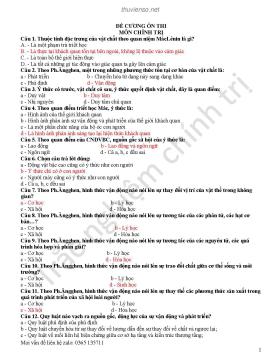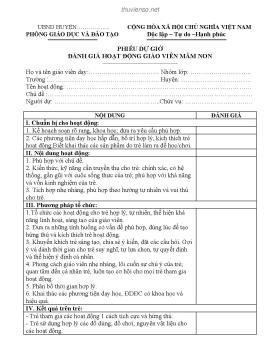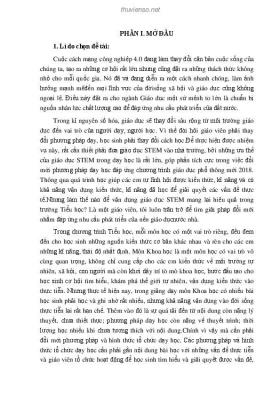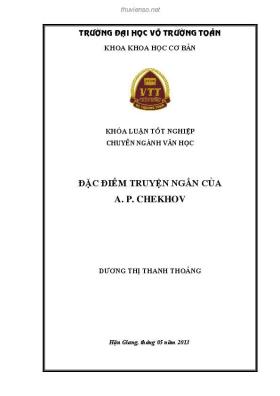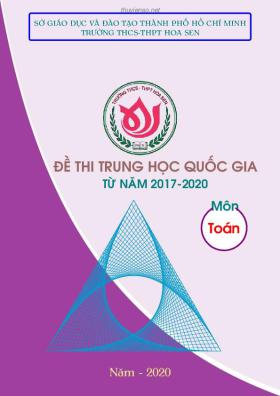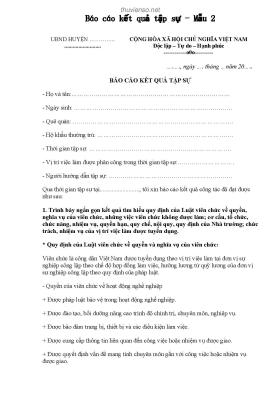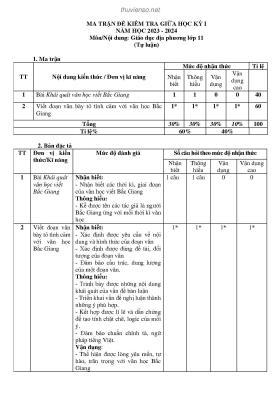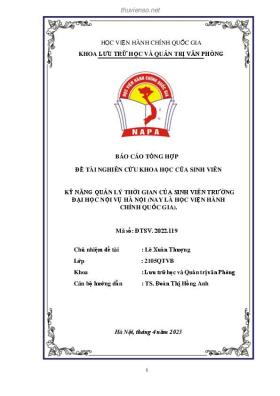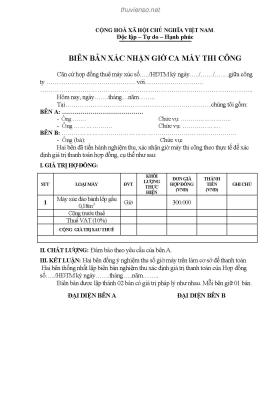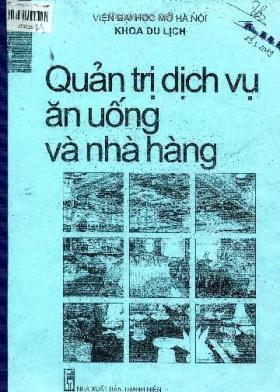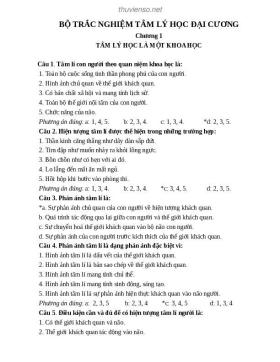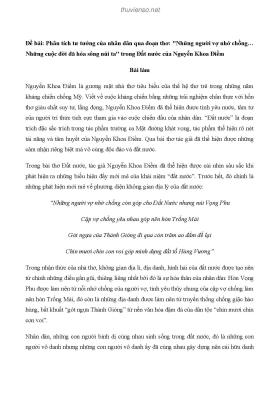
Báo cáo khoa học: A Program for the Machine Translation of Natural Languages
Số trang: 9
Loại file: pdf
Dung lượng: 232.90 KB
Lượt xem: 11
Lượt tải: 0
Xem trước 2 trang đầu tiên của tài liệu này:
Thông tin tài liệu:
In the following we give an account of a computer program for the translation of natural languages. The program has the following features: (1) it is adaptable to the translation of any two natural languages, not just to some particular pair; (2) it is a self-modifying program—that is, given the information that it has produced an incorrect translation, together with the translation which it should have produced according to the linguistic judgment of an operator, it will modify itself so as to eliminate the cause of the incorrect translation....
Nội dung trích xuất từ tài liệu:
Báo cáo khoa học: "A Program for the Machine Translation of Natural Languages" [Mechanical Translation, Vol.6, November 1961] A Program for the Machine Translation of Natural Languages by W. Smoke and E. Dubinsky*, University of Michigan, Ann Arbor, Michigan In the following we give an account of a computer pro- gram for the translation of natural languages. The program has the following features: (1) it is adaptable to the translation of any two natural languages, not just to some particular pair; (2) it is a self-modifying program—that is, given the information that it has produced an incorrect translation, together with the translation which it should have produced according to the linguistic judgment of an operator, it will modify itself so as to eliminate the cause of the incorrect translation. Before the account of the program itself we give a short sketch of the considerations which led to the program, to- gether with a statement of the reasons why we feel a program of the type presented will be adequate for machine translation. T he naive way to do research in machine transla- w hich is automatically modified as it translates moretion would be to pick a pair of languages, say Russian and more. Now how would one program a machineand English, and to try to discover some sort of trans- so that it would translate and in addition be able toformational rules connecting them, in terms of which a modify its process of translating?computer program might be written. The transforma- Let us try to reach a more precise idea of what ation rules might be derived from a comparison of the self-modifying translation program would look like.two languages on the basis of old-fashioned grammar, The complete program P w ould consist of two parts,or from the more recent theories developed by struc- a translation program T a nd a master program M . T hetural linguists, or by other means. Most of the effort program T w ould be responsible for the actual trans-in machine translation research so far has gone into lation from one language to another, while M w ouldderiving such transformation rules by one method or take care of making the changes in T . T hus supposeanother, and making them more explicit; that is to that P , or the part T o f P , is capable of translating thesay, putting them into a form in which they can be pro- Russian sentences S 1; . . . , S n c orrectly into English,grammed, and patching up the holes which are apt to but that it translates the sentence S n +1 i ncorrectly. Thenappear in such rules when they are applied to an the modification in P w ould take place as follows.actual text. Assuming that this kind of effort were suc- Given S n +1 a nd a correct English translation of S n +1 a scessful, its result would be a computer program, prob- input, the master program M w ould modify T t o ob-ably haywired together, which would—given a certain tain a translation program T . T he new complete pro-restricted kind of input material—produce a more-or- gram P w ould consist of M a nd T , a nd would trans-less accurate, more-or-less readable translation. One late S n +1 c orrectly. Furthermore, while we need notwould never know exactly when the machine was go- require that P b e capable of translating all of S 1 , . . ., S n +1ing to bog down on some particularly difficult Russian c orrectly, it is necessary that after some limited series P , P, P . . . P (m) o f modifications to P , a program P (m)passage, and when the program did bog down, no onewould know exactly where to put the next piece of b e obtained which is capable of t ...
Nội dung trích xuất từ tài liệu:
Báo cáo khoa học: "A Program for the Machine Translation of Natural Languages" [Mechanical Translation, Vol.6, November 1961] A Program for the Machine Translation of Natural Languages by W. Smoke and E. Dubinsky*, University of Michigan, Ann Arbor, Michigan In the following we give an account of a computer pro- gram for the translation of natural languages. The program has the following features: (1) it is adaptable to the translation of any two natural languages, not just to some particular pair; (2) it is a self-modifying program—that is, given the information that it has produced an incorrect translation, together with the translation which it should have produced according to the linguistic judgment of an operator, it will modify itself so as to eliminate the cause of the incorrect translation. Before the account of the program itself we give a short sketch of the considerations which led to the program, to- gether with a statement of the reasons why we feel a program of the type presented will be adequate for machine translation. T he naive way to do research in machine transla- w hich is automatically modified as it translates moretion would be to pick a pair of languages, say Russian and more. Now how would one program a machineand English, and to try to discover some sort of trans- so that it would translate and in addition be able toformational rules connecting them, in terms of which a modify its process of translating?computer program might be written. The transforma- Let us try to reach a more precise idea of what ation rules might be derived from a comparison of the self-modifying translation program would look like.two languages on the basis of old-fashioned grammar, The complete program P w ould consist of two parts,or from the more recent theories developed by struc- a translation program T a nd a master program M . T hetural linguists, or by other means. Most of the effort program T w ould be responsible for the actual trans-in machine translation research so far has gone into lation from one language to another, while M w ouldderiving such transformation rules by one method or take care of making the changes in T . T hus supposeanother, and making them more explicit; that is to that P , or the part T o f P , is capable of translating thesay, putting them into a form in which they can be pro- Russian sentences S 1; . . . , S n c orrectly into English,grammed, and patching up the holes which are apt to but that it translates the sentence S n +1 i ncorrectly. Thenappear in such rules when they are applied to an the modification in P w ould take place as follows.actual text. Assuming that this kind of effort were suc- Given S n +1 a nd a correct English translation of S n +1 a scessful, its result would be a computer program, prob- input, the master program M w ould modify T t o ob-ably haywired together, which would—given a certain tain a translation program T . T he new complete pro-restricted kind of input material—produce a more-or- gram P w ould consist of M a nd T , a nd would trans-less accurate, more-or-less readable translation. One late S n +1 c orrectly. Furthermore, while we need notwould never know exactly when the machine was go- require that P b e capable of translating all of S 1 , . . ., S n +1ing to bog down on some particularly difficult Russian c orrectly, it is necessary that after some limited series P , P, P . . . P (m) o f modifications to P , a program P (m)passage, and when the program did bog down, no onewould know exactly where to put the next piece of b e obtained which is capable of t ...
Tìm kiếm theo từ khóa liên quan:
A Program for the Machine Translation of Natural Languages W. Smoke and E. Dubinsky Mechanical Translation báo cáo khoa học báo cáo ngôn ngữ ngôn ngữ tự nhiênGợi ý tài liệu liên quan:
-
63 trang 314 0 0
-
13 trang 264 0 0
-
Báo cáo khoa học Bước đầu tìm hiểu văn hóa ẩm thực Trà Vinh
61 trang 253 0 0 -
Tóm tắt luận án tiến sỹ Một số vấn đề tối ưu hóa và nâng cao hiệu quả trong xử lý thông tin hình ảnh
28 trang 222 0 0 -
Đề tài nghiên cứu khoa học và công nghệ cấp trường: Hệ thống giám sát báo trộm cho xe máy
63 trang 200 0 0 -
NGHIÊN CỨU CHỌN TẠO CÁC GIỐNG LÚA CHẤT LƯỢNG CAO CHO VÙNG ĐỒNG BẰNG SÔNG CỬU LONG
9 trang 199 0 0 -
Đề tài nghiên cứu khoa học: Tội ác và hình phạt của Dostoevsky qua góc nhìn tâm lý học tội phạm
70 trang 190 0 0 -
98 trang 171 0 0
-
96 trang 168 0 0
-
SỨC MẠNH CHÍNH TRỊ CỦA LIÊN MINH CHÂU ÂU TRÊN TRƯỜNG QUỐC TẾ
4 trang 167 0 0



